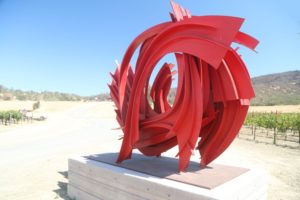
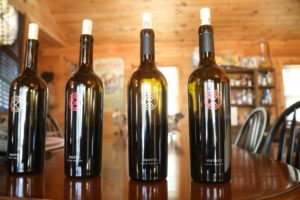
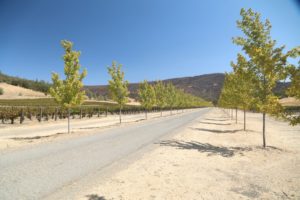 Cervantes Family Vineyards. Proprietor Xavier, his wife Cecilie and their three children, Jeronimo (Jero), Ana and Ximena are from Mexico City. Jero (who we met with) recalls the family always interested in food and wine and the kitchen was an important part of their lives. He recalls his grandmothers from both his mother and fathers’ side of the family would host large gatherings every week where everyone would congregate over food and wine.
Cervantes Family Vineyards. Proprietor Xavier, his wife Cecilie and their three children, Jeronimo (Jero), Ana and Ximena are from Mexico City. Jero (who we met with) recalls the family always interested in food and wine and the kitchen was an important part of their lives. He recalls his grandmothers from both his mother and fathers’ side of the family would host large gatherings every week where everyone would congregate over food and wine.
His father began his interest in wine by drinking wines from Rioja and parts of France. And his seriousness about wine further evolved through one of his partners in his real estate business – the owner of Wölffer Estate Vineyard on Sagaponack on Long Island. Jeronimo remembers his father visiting Wölffer Estate and it piquing his interest in possibly one day owning his own vineyard. Xavier looked for property over seven years in Mendoza Argentina, France, Walla Walla, Washington and also in other locations in Napa Valley before discovering a large ranch in Pope Valley. He purchased 1,100 acres in 2012 – a piece of land that was originally owned by the Hardin family (namesake of Hardin Road).
The Hardin family is deeply rooted in Pope Valley and are among the early Napa Valley pioneer settlers; Robert Hardin came to California as a 49er from Kentucky crossing Mexico overland from Veracruz to Mazatlan, then by sea to San Francisco on the Peruvian bark Fanny, arriving in April 1849. He settled in Pope Valley in 1854.
Pope Valley is named for its first western settler, William Julian Pope. Born in Kentucky in 1805, like his father John, he is one of the earliest settlers in Napa Valley. He was a trapper in New Mexico; he first came to California in 1827 and again in 1835 to Los Angeles. He spent a year in jail in San Diego after being arrested by the Spanish for entering a Mexican territory without holding the proper passport.
In 1841 he came to Napa Valley and settled in a valley east of the main Napa Valley, now known as Pope Valley. He built an adobe home on 8,873-acres gifted to him that same year by acting Mexican governor, Manuel Jimeno. Pope wasn’t the the only early settler to have a valley named after him in the region; reference Cyrus Alexander, William Knight, Frederick Franz and William Gordon.
The official document regarding the request for land by Pope was in Spanish and was received at the Custom House in the Port of Monterey in the Department of the Californias. Incidentally, the Customs House is the oldest still standing government building in California having been built in 1827, some 14 years before Pope’s letter was received. This building was also the site where Commodore John D. Sloat first raised the American flag in 1846, claiming California as a U.S. territory. It is California Historical Landmark No. 1.
Monterey is home to some of California’s oldest buildings. Not far from the Customs House is the still standing Cathedral of San Carlos Borromeo built between 1791 and 1794; it is the oldest stone building in California.
In English, Pope’s request translates to the following:
“Appeal to the Governor – That he is the owner of a number of full grown cattle,, and has no place for their shelter and protection: that in his search he has found land – a drawing of which is annexed, and that he has the consent of Don Guadalupe Mariano Vallejo – Director of Colonization of the Northern Frontier, and humbly asks you to grant him this land for which you will receive mercy and gratitude”. Monterey, Sept. 30, 1841 Julian Pope. Incidentally the cost of granting the seal was 25cents. Not bad for 8,873-acres Rancho Locoallomi land grant. For reference California’s first land grant given was San Pedro in Los Angeles County in 1784 and the last one San Juan Capistrano del Camote, in San Luis Obispo County in 1846.
Pope’s wife Juliana Salazar Pope was among the earliest women pioneers in Napa Valley along with Kitty Speed Fowler Musgrave, Maria Soberanes Bale Peabody and Maria de Jesus Higuera Juarez among others. Tragically Pope died at only 38 in an accident involving an ax in which he supposedly bled to death in 1843, having spent so little time in the valley that carries his name. Juliana married again, this time to Elias Barnett one of the first western settlers in Napa Valley; her property remained under family ownership until 1856. Elias’s last grandson James Barnett died in Napa in 1997 at age 92.
One of California’s most historic former resorts, Aetna Springs is located in Pope Valley about a 20 minute drive northwest of the Cervantes family property. Reference our in depth notes on the history of this resort as part of our review on this website of Heibel Ranch Vineyards. And for many years in the 1940s and 1950s, Kirkpatrick Ranch in Pope Valley owned by Gordon Kirkpatrick was home of Napa County’s largest turkey farm. During the height of his operations, his ranch produced about 38,000 turkeys a year.
Pope Valley is a very tight knit community. Other early families who moved to Pope Valley who still have descendants living in the area besides the Hardins include the Kirkpatricks, Eakles and the Paradys among others. And while it is not yet a sub appellation within Napa Valley, it should be. This region is distinctive based on its geography from the rest of Napa Valley and from a viticulture perspective, Pope Valley is long overdue to receive additional exposure and recognition for the quality of wines it produces
—
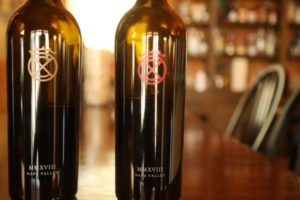
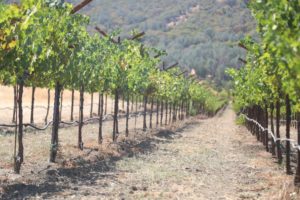 It is difficult to locate properties this size in Napa Valley as generally larger tracts of land have already been subdivided into smaller parcels. The property is gorgeous and ranges in elevation from the lower vineyards at about 600 feet to the uppermost reaches above 1,000 feet. It sits on the southernmost end of Pope Valley. On a clear day from the upper elevations, one has stunning views to the west and north overlooking much of the valley. Neighboring properties are Hardin Ranch, St. Supery’s Dollarhide Ranch with its 450+ acres of vines and on the east side, Cedar Roughs Wilderness natural park, a nearly 6,300-acre reserve overseen by the Bureau of Land Management (BLM) extending almost to Lake Berryessa.
It is difficult to locate properties this size in Napa Valley as generally larger tracts of land have already been subdivided into smaller parcels. The property is gorgeous and ranges in elevation from the lower vineyards at about 600 feet to the uppermost reaches above 1,000 feet. It sits on the southernmost end of Pope Valley. On a clear day from the upper elevations, one has stunning views to the west and north overlooking much of the valley. Neighboring properties are Hardin Ranch, St. Supery’s Dollarhide Ranch with its 450+ acres of vines and on the east side, Cedar Roughs Wilderness natural park, a nearly 6,300-acre reserve overseen by the Bureau of Land Management (BLM) extending almost to Lake Berryessa.
This is a quieter part of Napa Valley that few first-time tourists to the region ever see – a part of the county that is certainly worth seeking out. It is rural with few wineries and a nice balance of natural landscape and vineyards. It is more likely you will hear birds rather than the noises of passing vehicles.
The Cervantes family changed the name of the property after their purchase to Hine Ranch; this word in old English means farm manager and hine also refers to all the deer that live on site. What is probably the largest planting of peaches and nectarines in Napa Valley is a 4-acre parcel that eventually they want to use for making cider. Several natural springs are located on site along with four reservoirs. In 2020 the LNU Fire Complex burned a significant portion of their ranch – primarily the natural vegetation on the hillsides and by Jeronimo’s estimate some 70% of the ranch burned.
At the time of their purchase, the property was planted to 35 acres of vines but has since expanded to now 90 acres. The vineyard is primarily planted to Cabernet Sauvignon but also to Tempranillo and Sauvignon Blanc. For several years the Cervantes family sold all the grapes to various producers but starting in 2015 after encouragement from friends and family to make wine, Cervantes Family Vineyard produced their first vintage. Xavier originally wanted to hire a Mexican American winemaker but wasn’t able to find someone fully committed to the property; getting word of his interest in making wine, family friend and winemaker Andy Erickson offered to make their wine, his first Pope Valley winemaking project.
Andy’s career has not always been focused on wine; while working in San Francisco for an advertising agency, he wasn’t happy with the corporate world and opted for a dramatic career change and move – one that took him to Mendoza Argentina in the mid 1990s where he worked two harvests in the vineyards and in the winery. Returning stateside he met vintner John Kongsgaard who gave him a job working in the cellar at Newton Winery where Kongsgaard was the winemaker at the time. Andy then became a salesperson for Seguin Moreau – selling barrels. Returning to school, at the University of California, Davis he eventually earned his master’s degree in Viticulture and Enology with a thesis on co-pigmentation. He has made wine at a number of Napa Valley’s most well regarded and exclusive properties including Harlan Estate, Screaming Eagle and Dalla Valle, among others. And he has served as Chair of the Board of the Napa Valley Vintners Association.
We asked Jeronimo what he values most about their journey into the wine business and his answer was beautifully stated: to see his parents and family happy – with the property used as a place for family to gather and enjoy great food, wine and conversation. Earlier he told us, “The world is so loud, but the property brings balance and quiet into our lives.” And it is the people in Napa Valley that have influenced Xavier and initially attracted him to the region – as Jeronimo told us his father was in part attracted to the region because “it is a valley of doers”.
Select Wines
Cervantes Family Vineyards produces two wines each year, a proprietary red blend named Blacktail in homage to the blacktail deer often found on the ranch and Cervantes, a Cabernet Sauvignon.
The 2017 Blacktail is a Malbec and Cabernet Sauvignon leading blend with varietal percentages the following: 37% Malbec, 36% Cabernet Sauvignon, 23% Petite Sirah and 4% Petit Verdot. The wine is dark ruby in the glass; offers bright and fruit forward aromatics including blackberry, boysenberry and dark cherry. The aromatics are ripe but not overly so. Shows notes of mocha and as the wine evolves in the glass additional aromatics come forward including clove, cardamom, brown chocolate and cocoa powder. Offers flavors of red cherry and dark fig on the palate. The light to medium tannins are certainly noticeable but are rounded in their textural feel. Also slightly chalk like. Reveals a hint of dried tobacco leaf on the finish.
The 2017 Cervantes Cabernet Sauvignon is blended with a small percentage of Petite Sirah. The wine is dark ruby in color with purplish tinges on the rim of the glass; the bouquet offers pretty aromatics including of blackberry and boysenberry with just a hint of old cedar box in the background along with dried herbs. Also, old leather. The aromatics are dark and with plenty of depth of character. As the wine further breathes, reveals hints of rhubarb, rose stem and currant. A hallmark of this wine is its tannin density – there is still a tightness showing in its youth (we tasted three years post vintage date). Mouthwatering, lingers with flavors of dark cherry and tobacco.
The 2018 Blacktail is a blend of 27% Cabernet Franc, 23% Cabernet Sauvignon, 23% Malbec, 23% Petite Sirah and 4% Petit Verdot. Offers a bouquet with a nice mix of both fruit and desert spice notes including mocha and brown chocolate. This wine is quite approachable in its youth – it is an enjoyable showing offering layers of fruit across the palate. The tannins are dusty, somewhat gravely in their textural feel with a moderate grip. Mouthwatering on the finish.
The 2018 Cervantes Cabernet Sauvignon is 95% Cabernet Sauvignon and 5% Cabernet Franc. The Franc came from the Hudson Vineyard in Carneros; for subsequent vintages they will use their estate grown Cabernet Franc. This wine is dark inky ruby in color; features dark fruit across the bouquet including blackberry, black raspberry, spicy plum and black currant. Also shows hints of white pepper and toasted cedar. The nose is a tiny bit savory. As it breathes and warms in the glass offers aromas of Graham Cracker and mocha. This wine is mouthwatering across the palate with a noticeable intensity of both fruit and structure. The finish persists for some time anchored by firm tannins supporting layers of flavor.
—
When deciding upon a brand for the wine, Xavier initially found it difficult to come up with a representation that honored their family. Jero recalled his father created a brand years ago that the family often used and suggested this would be an ideal fit for their wines. This brand represents the first initial of each of the family members first names with an image above the brand depicting a crown showing five points of a keep (a tower in a castle).
Total production in 2017 was around 500 cases, it grew to 800 cases in 2018. Production continues to grow slowly with a desire to ultimately reach around 2,500 cases produced each year. While selling direct to consumer is their primary outlet for exposure and sales, the wines are also selectively distributed internationally; their largest overseas market is the United Kingdom. The wines are also found in South Korea, Japan and Canada.
In 2023 Cervantes Family along with Almacerro on Howell Mountain provided apples for Mad Fritz Brewery; the very limited production Mad Fritz Rose’ Graff Ale was released in 2024.
Allocation members are offered a three-bottle selection contained in a custom designed walnut box – once the wines are consumed customers often use this for storing valuables or even fine cigars. And each box has a slightly different look, depending on the grain of the wood.
For more information and or to join their allocation list, visit: www.cervantesfamilyvineyards.com

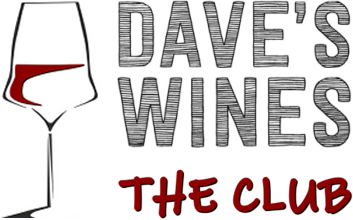





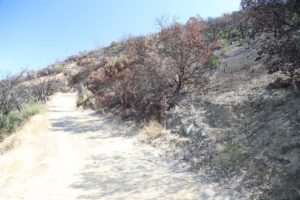
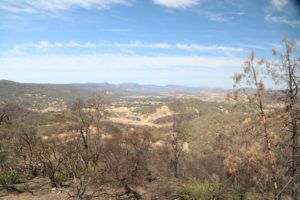
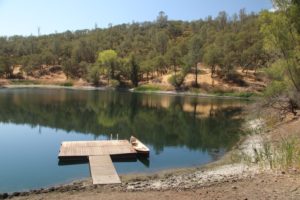
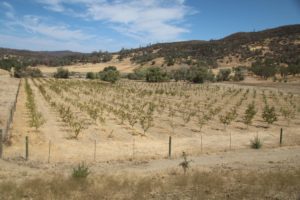
Leave a Reply